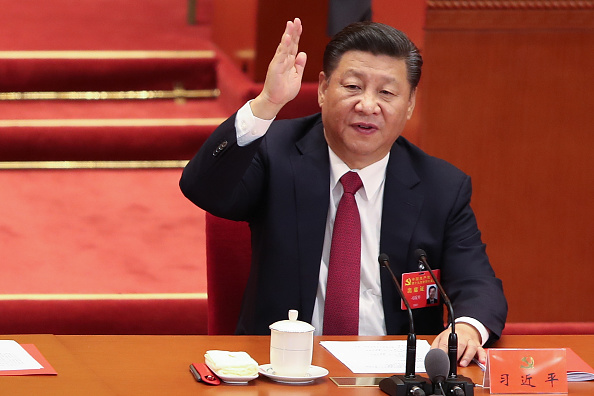China’s focus for 2022 – Economic and Social Development
A report presented by China’s Premier Li Keqiang at the fifth session of the 13th National People’s Congress
(NPC) laid out plans, needs and direction of policies required for social and economical growth in China
for the year 2022. The report reviewed all the work done in the previous year with a nod towards the touch
circumstances within and outside China, and then outlined any risks or challenges they may face in the
coming year. The event was attended by Chinese leaders such as Xi Jinping, Wang Qishan – Vice President
of People’s Republic of China, Wang Huning – First Secretary of the Secretariat of the Chinese Communist
Party (CCP), Senior Vice Premier of the State Council – Han Zheng, to name a few. At the event, Li
Zhanshu, Chairman of the NPC Standing Committee, stated that the CCP and the Committee are focused
on making laws and improving a few to ensure they are able to build a modern socialist nation.
As per the report presented by Li Keqiang, the targets set for economic and social growth are as follows –
5.5 per cent GDP growth, over 11 million jobs in the urban sector, and an increase of the consumer price
index by about 3 per cent. The NPC reviewed budgets, implementation plans, local budgets, for the years
2021 and 2022. They also had a look at the execution of budgets for the previous year, keeping in mind the
goals of stable macroeconomic performance, increasing job security in urban area, etc.
The NPC’s targets are a part of China’s long-term plans to return to socialism and curb capitalism. For the
better part of 4 decades, China (read as: Xi Jinping) has emphasized on economic growth while promoting
social equality, all while gathering more and more support for its Communist Party. The plan for 2022 is
in accordance with the outline set by the NPC in 2017 during their 19th Congress and all in the name of
their favourite catch phrase “common prosperity”. However, they had hoped that 2022 China would have
lifted itself out of extreme poverty and despite China’s rapid growth over the years, in 2021 600 million
people were still below the poverty line by China’s own standards.
We must also understand that for the CRP, any kind of socialism, social and economic development is not
acceptable, the big idea is the Chinese Dream sold by PRC’s lifeline – Xi Jinping, which is Socialism with
Chinese characteristics. The first stages of which is socialist industrialization. A large part of this China
becoming a socialist nation is its ability to capture the national economy with state-owned industrial
enterprises. However, without the intervention of the government, state-owned enterprises may incur
inexcusable losses. Losses due to business inefficiencies are rampant in state-owned industries from
carrying out government administration operations, political functions, or simply due to lack out autonomy
in management. With these inefficiencies and due to the pressure of being a major source of revenue for
the government, these state-owned industries are bound to crumble in a free market. China’s solution to
this problem is by cracking down on big industrialists and their private companies such as Jack Ma of
Alibaba and levying complex sanctions and restrictions on them to “level the playing field”.
The next step in China’s road to socialism with Chinese characteristics is the transformation of agriculture.
However, during the “Great Leap Forward” (the initial era of establishing a communist system in China or
Maosim between the years 1958 and 1963) the steps taken keeping the political agenda in mind often beat
common sense. These factors combined with extreme cropping conditions such as floods in some regions
and draughts in other led to about 20 million people losing their life to starvation or starvation related
diseases between 1959 and 1962.
To not repeat the mistakes of Mao leaders have recognised the need to be open to imports – China’s food
imports having increased from $14 billion to $104 billion between 2003 and 2017. The current challenge
in the agriculture industry faced by Xi Jinping includes availability of sufficient and usable water,
degradation and availability of farmland, pollution of soil, changing demands of a huge slowly urbanizing
population, all of these while trying to make the country’s agriculture industry environment friendly.China has
taken drastic
measures to
meet its
agricultural
demands
often causing
international
scandals,
especially
through their
Belt and Road
Initiative
projects
(BRI). To
meet local
demands
China has
pressured
governments
in countries like Pakistan by deploying their own trawlers in Gwadar Port. It is also commonly known that
Chinese vessels engaging in distant-water fishing (DWF) have conducted illegal fishing in the prohibited
waters of countries like Mauritania, and Senegai. The close ties between social and economic development
and agriculture means that the two depend on one another. China is currently far from self-sufficiency and
hence far from achieving its goals in terms of reforming its agriculture industry in socialist tones.
References
1. https://chinapower.csis.org/china-food-security/
2. https://thediplomat.com/2022/02/chinas-focus-on-food-security/
3. http://english.scio.gov.cn/topnews/2021-09/24/content_77771568.htm
4. https://www.thegreatcoursesdaily.com/how-imperial-china-gave-way-to-modern-china/
5. https://www.gonewsindia.com/latest-news/international/modern-socialism-from-economy-to-
defence-chinas-five-year-plan-sets-sweeping-targets-20253
6. https://bigthink.com/the-present/what-is-socialism-like-in-china/
7. https://www.historylearningsite.co.uk/modern-world-history-1918-to-1980/china-1900-to-
1976/the-great-leap-forward/
8. https://www.investopedia.com/articles/investing/081514/socialist-economies-how-china-cuba-
and-north-korea-work.asp
9. https://link.springer.com/chapter/10.1007/978-981-15-9833-3_1
10. https://www.jri.co.jp/english/periodical/rim/1999/RIMe199904threereforms/
11. https://www.wsj.com/articles/chinas-xi-eyes-return-to-communist-party-roots-amid-private-
sector-crackdown-11629289611
12. https://www.wsj.com/articles/xi-jinping-aims-to-rein-in-chinese-capitalism-hew-to-maos-
socialist-vision-11632150725
Figure 1 – China’s Import and Export in 2017











